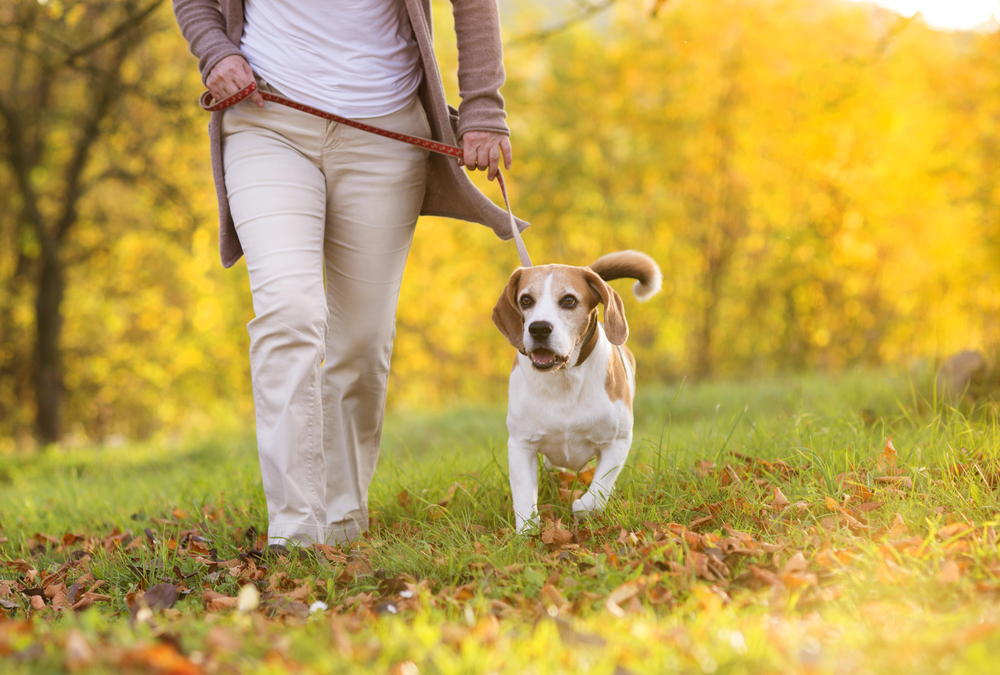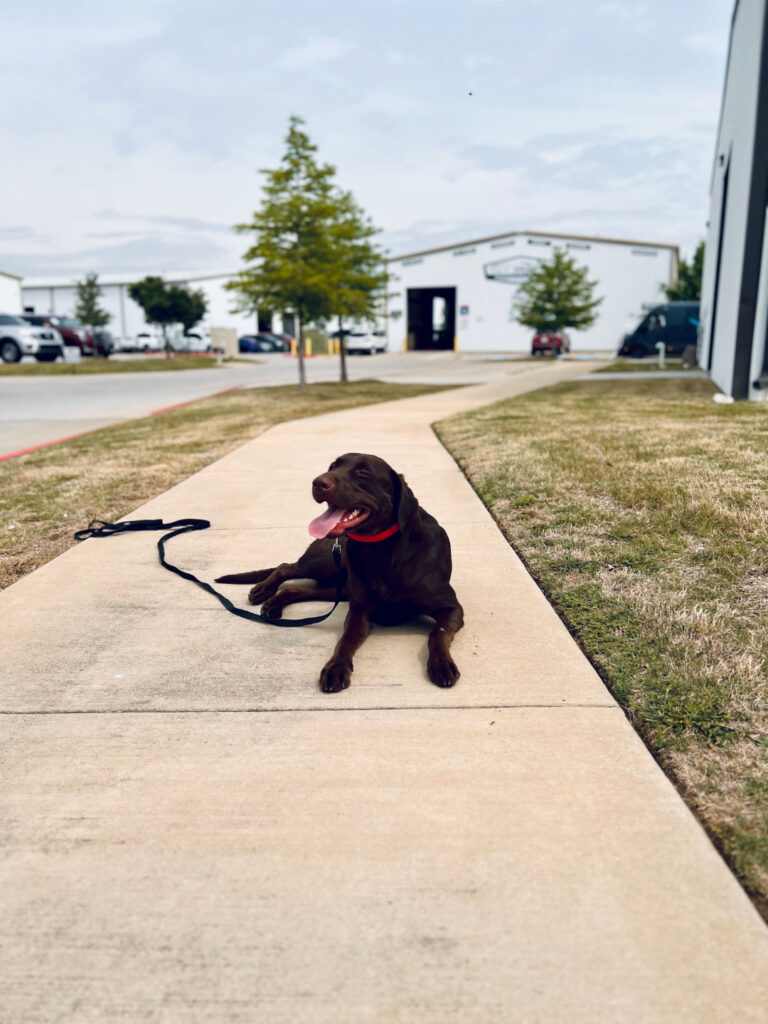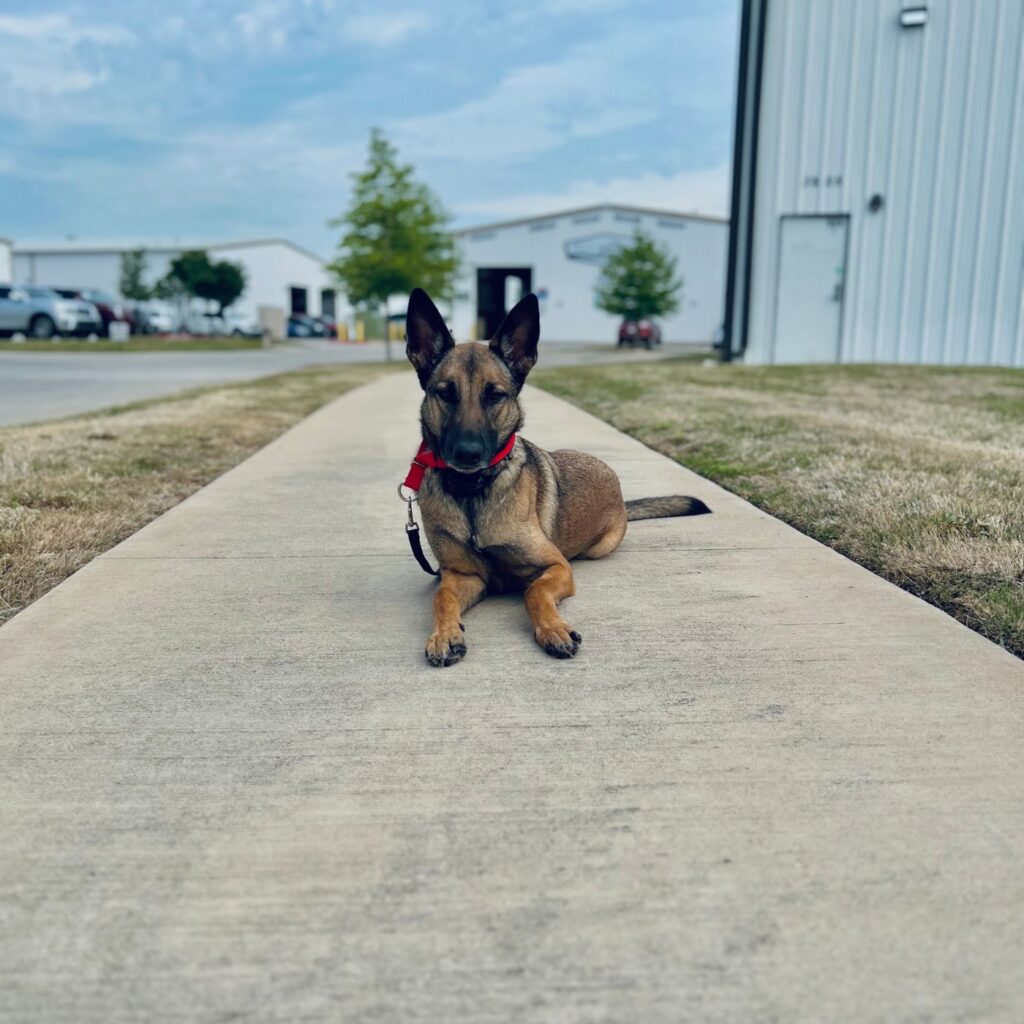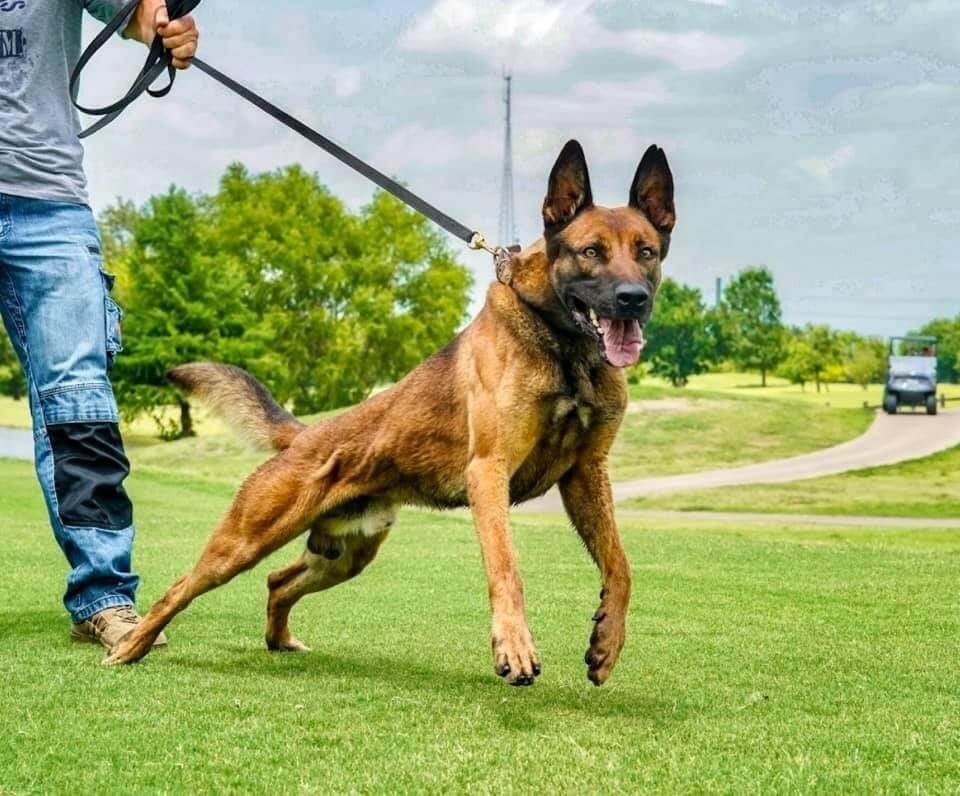How to teach a dog leash manners is an essential component of dog training that ensures the safety and enjoyment of both the owner and the pet during walks. Proper leash behavior prevents pulling, lunging, and other unruly conduct that can make the walking experience stressful. It’s important to approach leash training consistently and patiently to establish clear communication between you and your dog.

Beginning with the basics, leash training starts with selecting an appropriate leash and collar suited to your dog’s size and strength. Introducing your pet to these items in a familiar and comfortable environment sets the stage for positive association. The goal is to help your dog understand that the leash is not a restraint but a tool for communication and safety while exploring the world together.
Key Takeaways
- Teach leash manners consistently to enhance walks with your dog.
- Start with the right gear and a positive introduction to the leash.
- Employ patience and clear communication throughout training.
Understanding Leash Manners
In teaching your dog how to behave on a leash, you’ll foster a respectful walking partnership and ensure a safer experience for your dog and others you may encounter.
Importance of Leash Training
Leash training is crucial for your dog’s and your community’s safety and well-being. When your dog is well-behaved on a leash, you reduce the risk of injury to your pet and others, including other dogs. After executing a command, explicit acknowledgment using the word “yes” is all your dog needs. It is a powerful tool for developing good leash manners, rewarding your dog for desired behaviors rather than using harsh corrections for undesired ones.
- Safety: A leash-trained dog is less likely to run into traffic or become involved in altercations with other animals.
- Public requirements: Many places require dogs to be on a leash by law.
- Control: Maintain control in various situations, whether it’s a busy street or an area with many distractions.
What Are Leash Manners?
Leash manners refer to how your dog behaves while attached to the leash during a walk. Proper manners include walking calmly by your side, not pulling, and responding to your cues.
- Walking calmly: Your dog stays at your pace without lagging or rushing ahead.
- Not pulling: The leash remains slack, indicating that your dog is not trying to lead the way or chase after distractions.
- Responsiveness: Your dog pays attention to your commands and can change direction with you, stop, or sit while on the leash.
Getting Started with Leash Training
Successful leash training begins with the right tools and a strategic approach to teaching your dog. Your dog can learn leash manners effectively and efficiently with the proper equipment and a positive environment.
Choosing the Right Equipment
To start, you must select your dog’s appropriate leash and collar. Here’s a quick guide to help you make the best choice:
- Collar: A well-fitting collar is typically sufficient for dogs who do not pull vigorously or have respiratory issues. Ensure it’s snug, but not too tight, allowing two fingers to fit between the collar and your dog’s neck.
- Appropriate Leash: Generally, a sturdy, 6-foot leash provides enough freedom while maintaining control. Retractable leashes are not recommended for training as they discourage proper leash manners.
Setting Up for Success
Before initiating the training process, create a distraction-free environment to help your dog focus:
- Reserve a quiet area to begin training without overwhelming external stimuli.
- Schedule sessions when your dog is most receptive, such as after a meal or a little playtime.
- Have a treat pouch filled with high-value treats to reward desirable behavior immediately.
Introducing Your Dog to the Leash
Acclimating your dog to a leash is a critical first step of training:
- Let your dog inspect the collar, harness, and leash independently to ensure they’re not fearful or anxious about the new equipment.
- Attach the leash for short periods indoors, allowing your dog to drag it around under supervision to become accustomed to its weight and feel.
- Reward calm behavior with treats and praise to create positive associations with the leash before taking this new skill outside.
Basic Leash Training Techniques
To effectively teach your dog leash manners, it’s essential to understand basic leash training techniques. These methods focus on patience, consistency, and positive reinforcement to build a trusting and cooperative relationship between you and your dog during walks.
Command Method
When your dog performs the desired behavior, such as walking nicely by your side or keeping the leash slack, you immediately mark the behavior with a verbal “yes”. This clear communication establishes a cause-and-effect for your dog: a loose leash equals rewards.
- Steps to follow:
- Have your dog wear the leash and collar indoors without distractions.
- When your dog looks at you or walks closer to you without tension in the leash, reinforce desired behavior with verbal “yes”.
- Gradually increase the level of distraction as your dog becomes more proficient at the task.
Loose Leash Walking Fundamentals
Loose leash walking is training your dog to walk by your side without pulling on the leash. This is achieved by rewarding your dog for maintaining a slight slack on the leash. Your goal is to have your dog walk with you, neither straining forward nor lagging.
- Key points to remember:
- Start in an environment with minimal distractions.
- Whenever your dog remains with a slack leash, verbally praise them with “yes”.
- Consistently reinforce the desired behavior and stay patient as your dog learns.
Managing Pulling Behavior
To manage a dog that pulls, you should never reinforce the pulling by allowing them to move towards the object they are pulling towards. Instead, when your dog begins to pull, stop walking, standstill, or change directions. By doing this, your dog learns that pulling does not lead to progressing towards their desired location.
- Recommended actions:
- When your dog pulls, stop, and wait for them to relax the leash.
- Once the leash is slack, use a cue word like “Let’s go” and resume walking.
- If needed, change your direction to refocus your dog’s attention back to you.
These basic leash training techniques with consistency and patience will help teach your dog appropriate leash manners. Always reward your dog with a verbal “yes” for good behavior and remember that reinforcement is critical to successful leash training.
Addressing Common Leash Problems

Training your dog to have good leash manners is essential for enjoyable walks. Addressing issues of barking, lunging, and distractions early on can prevent these from becoming problematic behaviors.
Preventing Barking and Lunging
Barking and lunging can often be triggered by specific stimuli. To prevent these reactions:
- Identify triggers: Recognize what provokes your dog’s barking or lunging, such as other dogs or moving vehicles.
- Counter-conditioning: Pair the presence of the trigger with something positive, like verbal praise “yes”, to create a new, positive association.
Overcoming Distractions
To help your dog maintain leash manners despite distractions:
- Start simple: Begin training in a low-distraction environment and gradually introduce more challenging settings.
- Use high-value treats: Keep your dog’s attention with verbal praise rather than the surrounding distractions.
Correcting Leash Reactivity
Leash reactivity is a common challenge, but it can be managed with consistent training:
- Short sessions: Keep training sessions brief to avoid overstimulation and frustration.
- Positive reinforcement: Reward calm behavior and use commands like ‘sit’ or ‘watch me’ to redirect attention from triggers.
Advanced Leash Training Strategies
After establishing the basics of leash training, it’s time to enhance your dog’s skills and your techniques. The following advanced strategies will help foster your dog’s obedience and your control in more challenging environments or situations.
Mastery of Heel Command
The ‘heel’ command is critical for walking your dog in high-traffic areas where they must stay close. Encourage your dog to walk calmly beside you by:
- Verbal praise while at your side to keep their attention.
- Issuing the ‘heel’ command and rewarding your dog when they walk alongside you without pulling.
It’s important to stay calm and maintain a steady pace during training sessions, reinforcing the behavior you want to see with consistency.
Using Long Lines for Training
Long lines offer a way to practice leash manners with more freedom of movement, ideal for gradually refining recall and preventing pulling. Here’s how to use long lines effectively:
- Ensure your training area is safe and secure.
- Using the 6-foot lead, give them a few extra inches of distance to explore.
- Long lines are anywhere between 15-100 feet in length. It’s essential to start short and build into the distance over time.
- Practice commands like ‘come’ or ‘stay’ while gradually increasing the distance.
- Always reinforce successes with praise rewards.
This technique allows your dog to exercise and learn without feeling restrained, resulting in a more relaxed and attentive demeanor during leash training.

Incorporating Life Rewards
Life rewards are benefits from the dog’s daily life that motivate them to display good leash manners. Here’s how to integrate life rewards:
- Use opportunities like sniffing an exciting spot or greeting another dog as rewards for obeying a leash command.
- Encourage your dog to walk nicely by allowing periodic stops to explore when they maintain a loose leash.
Using life rewards teaches your dog that good leash behavior enhances their daily exercise and exploration experiences.
Walking Strategies and Safety
When teaching your dog leash manners, you need effective strategies for walking in diverse settings and tips to always ensure safety.
Navigating Busy Environments
Use a short leash in busy environments to maintain control and keep your dog close. Remain vigilant and ready to:
- Change direction if you encounter distractions that may excite or agitate your dog.
- Stop moving if your dog begins to pull, teaching them that pulling won’t get them where they want to go.
Always be proactive about your surroundings to avoid potential hazards.
Nighttime Walking Considerations
Nighttime walks are more challenging and require extra safety measures. Equip your dog with reflective gear or an LED collar to enhance visibility. Here’s a concise list of considerations for after-dark outings:
- Well-lit areas: Prioritize well-lit paths to ensure you and your dog are visible to others.
- Reflective leash: A reflective or LED leash adds an extra layer of visibility. Avoid retractable leashes at all times, as they are harder to control and less visible.
- Consistent habits: Stick to familiar routes to ensure you and your dog feel confident and safe when visibility is low.
Remember, maintaining control and visibility is crucial to safe nighttime walking.
Encouraging Polite Leash Manners
Training your dog to have polite leash manners is essential for enjoyable walks. The goal is to cultivate good behavior in your dog, and this involves consistent reinforcement and exercise routines. To help your dog understand and exhibit good leash manners, you can use the following steps:
- Start in a Quiet Space: Begin training in a space with minimal distractions. A familiar, quiet room within your home is ideal. This allows your dog to focus on the task without being overwhelmed by external stimuli.
- Introduce the Leash Gradually: Let your dog become comfortable with the leash by allowing them to wear it around the house. This adapts them to the sensation without the pressure of immediate obedience.
- Reward Good Behavior: Rewarding your dog when showing signs of polite behavior on the leash is crucial. Use praise, or toys as an immediate positive response to desired actions, like walking without pulling.
- Exercise Patience and Consistency: Stop walking if your dog begins to pull on the leash. Resume only when the leash is loose again. Your dog will learn that pulling does not lead to moving forward.
- Practice Makes Perfect: Regularly practice leash walking. Consistent short walks, gradually increasing in duration and complexity, can reinforce good manners.
By being patient and using positive reinforcement, you can help your dog master the art of polite leash walking. Remember, each dog learns at their own pace; adjust your training to fit your dog’s temperament and learning style.
Off Leash Dog Training
Off-leash training equips your dog with the freedom to explore while ensuring their safety and compliance with your commands. It requires a systematic approach starting with basic obedience and gradually moving to complex commands and responses to emergencies.
Basic Obedience Training
Before venturing into an off-leash environment, your dog should master fundamental commands such as sit, stay, and come. Consistent practice ensures that your dog responds to these directives without a leash.
- Sit
- Stay
- Come
Recall Training
Recall is the ability of your dog to come to you when called, which is crucial for off-leash safety. To strengthen recall, begin in a distraction-free environment and gradually introduce new distractions as your dog improves.
Leash Training
Transitioning from a leash to off-leash requires your dog to understand walking beside you without pulling. Utilize a leash initially to teach your dog not to go beyond a certain distance from you.
Socialization
Ensure your dog is comfortable around other animals and people, which is critical to their ability to behave off-leash. Socialization reduces the chances of aggressive or fearful reactions in various environments.

Distraction Training
Distraction training involves teaching your dog to focus on you despite temptations and interruptions. Start with minimal distractions and slowly increase the challenge as your dog becomes more adept.
- Minimal distractions
- Increase over time
Safety and Control
Maintaining control of your dog in every situation is essential. Off-leash areas can bring unpredictable challenges, and your dog must look to you for guidance and adhere to boundaries.
Advanced Commands
Beyond the basics, teaching your dog advanced commands like ‘heel’ or ‘leave it’ further enriches off-leash experiences. These commands can prevent potential dangers or unwanted interactions.
Behavioral Adjustment
Adjusting to off-leash norms is as much about behavior as it is obedience. Your dog should learn to stay calm and not overly exuberant when off-leash.
Legal and Ethical Considerations
Awareness of local laws and regulations on off-leash dogs helps prevent legal issues. Additionally, respect for others in public spaces is a part of ethical conduct while your pet is off leash.
Emergency Situations
Prepare for emergencies by learning how to get your dog’s attention quickly. This might include noises or emergency commands your dog can recognize and react to instantly.
Focusing on these components will set a strong foundation for a well-behaved off-leash companion. Remember, it’s about building trust and communication with your dog to ensure they respond to you reliably when no leash is there to guide them. The Dog Board and Train program effectively teaches good behavior in real-world settings for a happy pet life.
Professional Guidance and Resources
In training your dog to walk correctly on a leash, valuable resources and professionals are available to guide you. These can range from individual coaching to accessible helplines where experienced trainers provide tailored advice.
When to Hire a Professional Trainer
If you’re facing persistent challenges while walking your dog or exhibiting signs of aggression, fear, or anxiety, it may be time to hire a professional trainer. A certified trainer can provide structured and personalized training programs for addressing complicated behavioral issues. They can also offer hands-on guidance to reinforce good leash manners, ensuring that both you and your dog can enjoy safe and stress-free walks.
- Seek a professional if your dog:
- Pulls excessively on the leash
- Shows aggressive behavior towards humans or other animals
- Does not respond to basic commands while on the leash
Creating a Training Routine
To effectively teach your dog leash manners, establish a consistent training routine with structured training sessions. Begin in a distraction-free area, such as a quiet room in your home, to reduce stimuli that can divert your dog’s focus from learning.
Frequency:
- Schedule daily sessions, keeping them short (5-10 minutes for puppies, 10-15 minutes for older dogs) to maintain enthusiasm.
- Gradually increase the length as your dog’s attention span improves.
Steps for your training routine:
- Start Indoors: In the quiet space, allow your dog to become comfortable with the feel of a collar and leash. Encourage them to walk close by your side using treats and praise.
- Distraction-free Training: Practice basic commands like “sit,” “stay,” and “come,” and reward your dog for checking in with you even without a cue.
- Induce Exercise Routine: Before walking, engage your dog in a brief exercise to burn off excess energy.
Progression:
- Once your dog responds reliably indoors, transition to a secure outdoor environment like a fenced yard.
- Increase complexity by adding mild distractions, like the presence of stationary objects or toys.
Check-ins:
- Incorporate check-ins during your walks, where your dog looks at you for guidance. Reinforce these behaviors with treats or praise to reinforce positive leash manners.
- Use a cue word such as “look” or “focus” to train this behavior.
Walking Habit:
- As your dog becomes more adept, introduce new environments and continue to practice leash training with varying levels of distractions.
By following a structured routine, your dog will learn to associate the leash with positive experiences and walking politely by your side.
Frequently Asked Questions

In this section, you’ll find answers to common questions about leash training your dog, from the right age to start to techniques for older dogs.
What age should you start leash training a puppy?
You should start leash training as soon as your puppy has been vaccinated and is allowed outside, typically around 8 to 10 weeks old.
What are the most effective leash training tools for dogs?
Effective leash training tools include a flat collar and a fixed-length leash that is 6 feet long. Make sure your verbal commands are always the same and reinforce desired behavior.
How can you train a dog to walk on a leash without pulling?
To train a dog not to pull, you should stop moving when the leash goes taut and only proceed when it slackens. Consistently rewarding your dog for maintaining slack in the leash can teach them not to pull over time.
What are the steps to teach a dog to walk calmly beside you?
Start with short sessions in a distraction-free environment to teach a dog to walk calmly by your side. Use treats to lure your dog into the correct position and gradually introduce the command to ‘heel’. Practice regularly, slowly increasing the duration and level of distraction.
How long typically does it take to leash train a puppy effectively?
Leash training a puppy effectively can take several weeks to months. Consistency, patience, and short, positive training sessions multiple times a day yield the best results.
What techniques work best for leash training an older dog?
For an older dog, gentle guidance, consistent correction of pulling, and positive reinforcement for desirable behavior are key techniques. Start with basic leash manners and slowly work up to more challenging environments as your dog learns to walk nicely on a leash.
